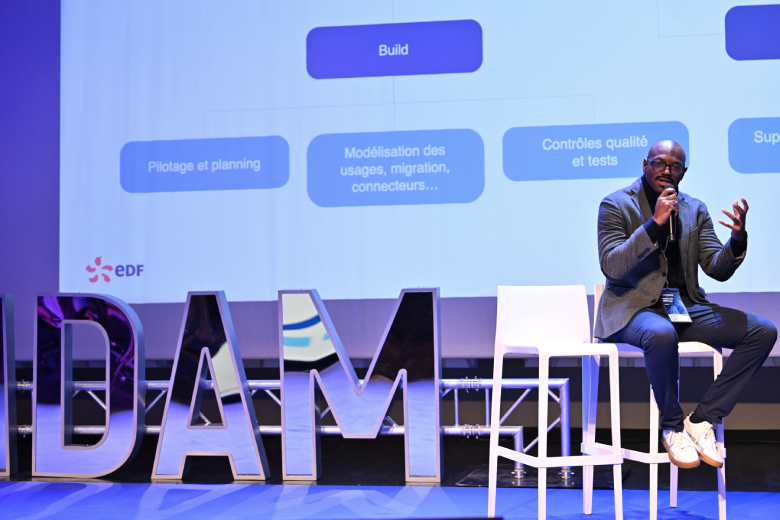
Are you convinced that you need a Digital Asset Management solution to showcase your communication assets and streamline the production and sharing of your media?
It's time to launch your DAM project! But don't confuse speed with haste. There's no question of blocking the deployment of your DAM platform, not because of technical considerations, but because of theorganization of your documentary holdings ! It's unthinkable that the time spent retrieving and indexing your media should block the deployment of the platform. Or even worse, that the platform be put online empty!
And you don't want to run the risk of falling behind right from the start. We've already explained the importance of a thesaurus to the success of your DAM project.
But when should you start thinking about the thorny question of indexing? What skills and resources do you need in-house? Find out here why and howdocument expertisecan be invaluable, and often indispensable, in speeding up the launch of your project.
Once your DAM solution is in place, who will be its day-to-day administrators and contributors? In most cases, it will be the marketing and communications teams. However, the people who produce and index illustrations, photos and videos are not always familiar with information structuring methodologies. And yet, these documentary skills are essential to the success of your project.
Why build a customized thesaurus, which classification scheme to choose or which indexing fields to make compulsory are all questions requiring detailed expertise.
What will be the profile of the end-users: general public and/or professionals familiar with the technical vocabulary of your business sector? What languages will they speak? What types of access and rights should be assigned to each type of user? And given these questions, where do you start?
It's easy to feel lost... But not only are these steps mandatory, they're the ones that will determine how well your media will be indexed. And the speed with which users can access the content they need will depend on how well your media is indexed. This is the key to ensuring the visibility and full use of your digital content, the return on investment of your creations...and the profitability of your DAM solution!
These steps should be taken as early as possible, ideally in the project definition phase.
In fact, the use to which your media will be put, as well as an assessment of their volume and specific features, will have an impact on the structuring of indexing data. As a result, we can estimate the time and resources required to retrieve your media.
From there, the DAM supplier will be able to give a precise estimate of the project in terms of cost and schedule. At Keepeek, this takes the form of a systematic audit right from the start of the project, included with the purchase of licenses for the solution.
The temptation is great to manage the transfer of your media and their import into your new DAM platform yourself.
After all, who better to know the nature of your products or services than you?
However, this step is crucial, and the investment required to complete it should not be underestimated.Indexing media necessarily requires manual intervention; it can be tedious and time-consuming. But project managers don't necessarily have the bandwidth to deal with it. This is especially true in the initial phase, when their investment is needed to coordinate the various internal departments.
The good news is that the Keepeek Documentary Pole team can help!
Acting as a consultant, and drawing on its experience in supporting over 300 customers, it has two precious assets at its disposal: method and time. Today, with a team of 7 documentalists who can be reinforced according to specific needs, our Documentary Department continues to grow and specialize.
The aim of our document experts is to help you save time without mobilizing your teams. Their intervention, through processes established at the outset of the project, enables you to keep the involvement of your teams to a minimum.
For a typical project, 3 half-day workshops are all that's needed to audit your filing plan and media indexing record, and define user groups and associated workflows. And there's no need to mobilize the whole team: a single business contact is all that's needed (the person most familiar with end-users' needs). Then, documentalists set up the classification plan directly in the application, to carry out validation tests under real-life conditions. Last but not least, if you need to retrieve data that requires manual indexing, you can save precious time by setting up a documentation service.
In just 2 hours, a seasoned documentalist can index and classify a number of media equivalent to a whole day's work for a non-specialized in-house employee. This efficiency is further optimized by their in-depth knowledge of Keepeek DAM. A significant productivity gain!
Note that indexing is carried out remotely, and does not require customer intervention. Thanks to their expertise and availability, your DAM editor 's documentalists are definitely essential partners in the implementation of your project!

EDF présente la refonte de son Media Center et explique comment Keepeek l’aide à mieux centraliser, organiser et partager ses contenus de marque. Une démarche centrée sur les usages pour améliorer la gestion des médias et la collaboration à grande échelle.


La collaboration entre Keepeek et le Club Med a permis de centraliser la gestion des contenus visuels, améliorant ainsi l'efficacité des équipes, la cohérence de la marque et la conformité à l’échelle mondiale. Ce modèle est devenu un atout stratégique pour l’entreprise.
